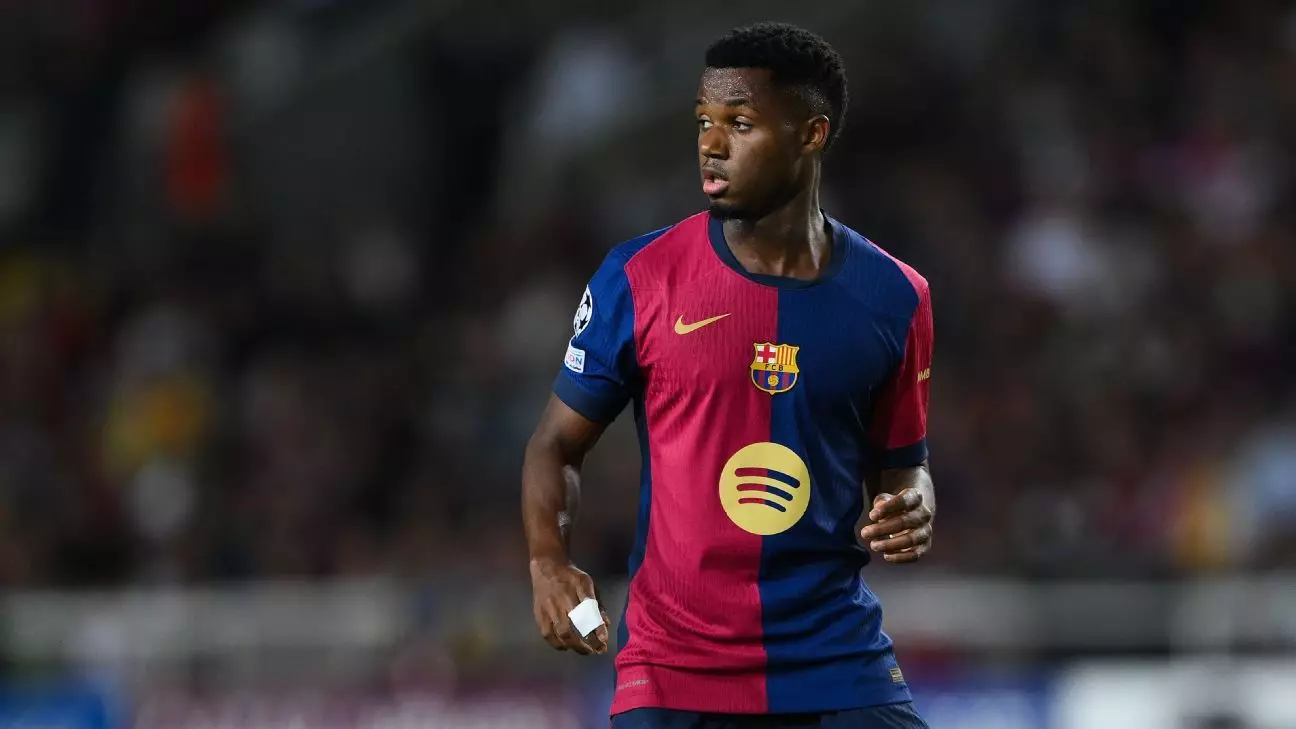The winter transfer window is a crucial period in European football, acting as a crossroads for clubs aiming to reinforce their squads or rejuvenate a player’s career. As we approach this phase, several clubs are knee-deep in speculation, strategizing, and negotiations. The landscape is dynamic, with players seeking opportunities, clubs considering financial implications, and ambitions teetering on the edge of decisive transactions. This article delves into some of the most intriguing stories in the current transfer chatter.
One of the more compelling narratives involves Barcelona and their young forward, Ansu Fati. Once considered a prodigy with a glittering future, Fati’s trajectory seems to have plateaued, especially following an underwhelming loan spell at Brighton and an injury-marred pre-season. Fati has only managed a meager 28 minutes of game time this season, which raises eyebrows regarding his current form and fitness.
Barcelona’s willingness to loan out Fati in January signals a pragmatic approach, one driven by the quest to secure minutes for the player that would enable him to regain his rhythm. However, their decision is contingent upon finding a suitable replacement, revealing the tightrope they walk between player development and financial viability. This reflects a broader trend within top clubs as they attempt to balance investments in young talents while navigating salary caps and financial restrictions.
Another intriguing player in the transfer conversation is Manchester United’s Alejandro Garnacho. The talented winger has drawn interest from prominent clubs such as Barcelona and Juventus, but United’s valuation of over £70 million showcases their intention to retain the 20-year-old unless a significant offer materializes. Garnacho’s frustration over limited playtime underscores the challenges faced by emerging talents at elite clubs where competition for places is fierce.
Interestingly, the player’s dream of gracing the pitch for Real Madrid complicates the narrative. This situation is emblematic of the tug-of-war between player aspirations and club strategies. United might be reluctant to lose a player with such potential, but they must also consider the long-term implications of keeping an unhappy player whose ambitions may lie elsewhere.
Robert Lewandowski’s continued partnership with Barcelona appears promising, especially considering the terms embedded in his contract. The 36-year-old striker has been in exceptional form, starting all matches thus far. Reports suggest that should he maintain this level of performance, his contract could extend into 2026. This scenario highlights Barcelona’s strategy of maintaining experienced players who can offer stability and proficiency on the pitch, even amid financial challenges.
Lewandowski’s situation exemplifies a growing trend where seasoned players who have proven their worth are seen as essential components of a team rather than financial burdens—a vital perspective for clubs aiming for both short-term success and long-term sustainability.
The case of Paul Pogba presents a nuanced layer to Juventus’ winter strategy. Following a reduced doping ban, the club is reportedly considering a January exit for the midfielder. This situation reflects a shifting attitude within Juventus, where performance and reputation must be evaluated against financial responsibilities. Reducing wage bills is critical, especially when high-profile players struggle to stay on the pitch.
Pogba’s potential departure illustrates the club’s strategic pivot toward younger players—an approach signaled by their interest in talents like Ajax’s Jorrel Hato and Maxence Lacroix. This focus on youth over experience may well be a deliberate move to rejuvenate the squad while being conscious of long-term financial sustaining, highlighting a generational shift within the club.
In the wake of defensive injuries to players like Gleison Bremer, Juventus’ search for reinforcements has taken center stage. While veteran defenders like Simon Kjaer and Sergio Ramos have been linked with moves, the focus appears to be shifting toward younger alternatives. This proactive decision not only aligns with financial sustainability goals but also enhances the potential for dynamic play across the defense.
Exploring options such as recalling Tarik Muharemovic from Sassuolo underscores a willingness to consider homegrown talent, which can seamlessly fit into the club’s philosophy. The evolving landscape of transfers within Serie A is an exciting reflection of clubs adapting strategically to the shifting currents in player dynamics and market economics.
As the winter transfer window looms, the narratives of player movements entwine aspirations, strategic planning, and financial prudence. For clubs and players alike, the next few months will be pivotal, shaping their trajectories in the ever-competitive arena of European football.

